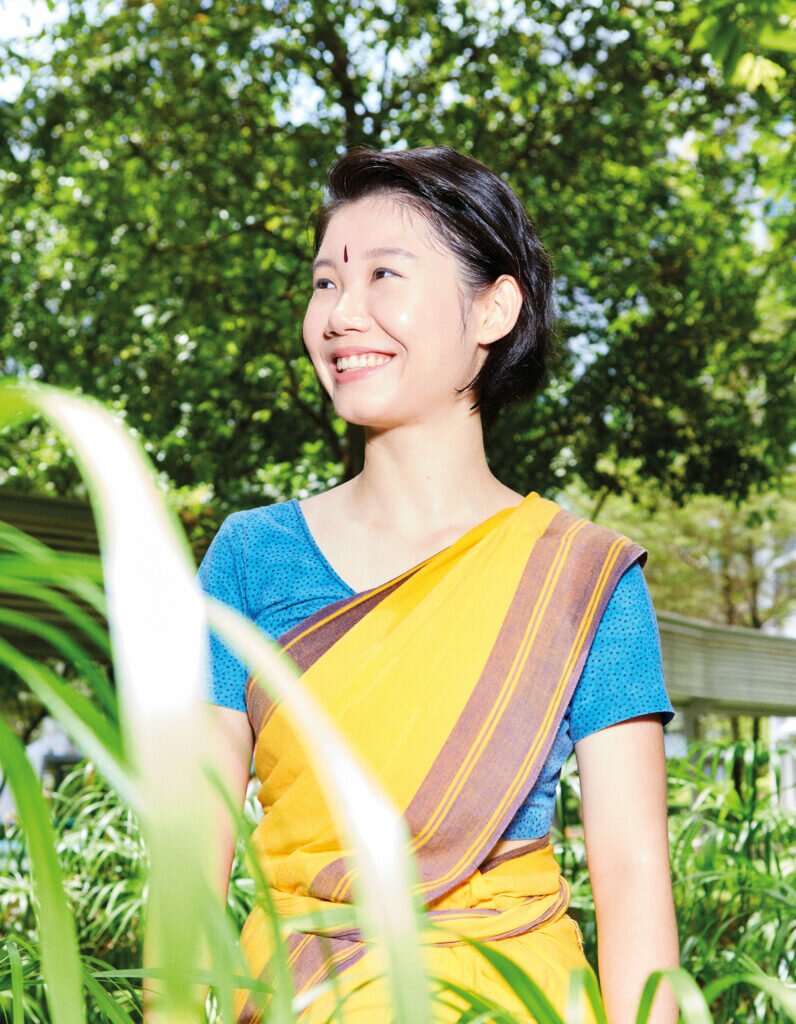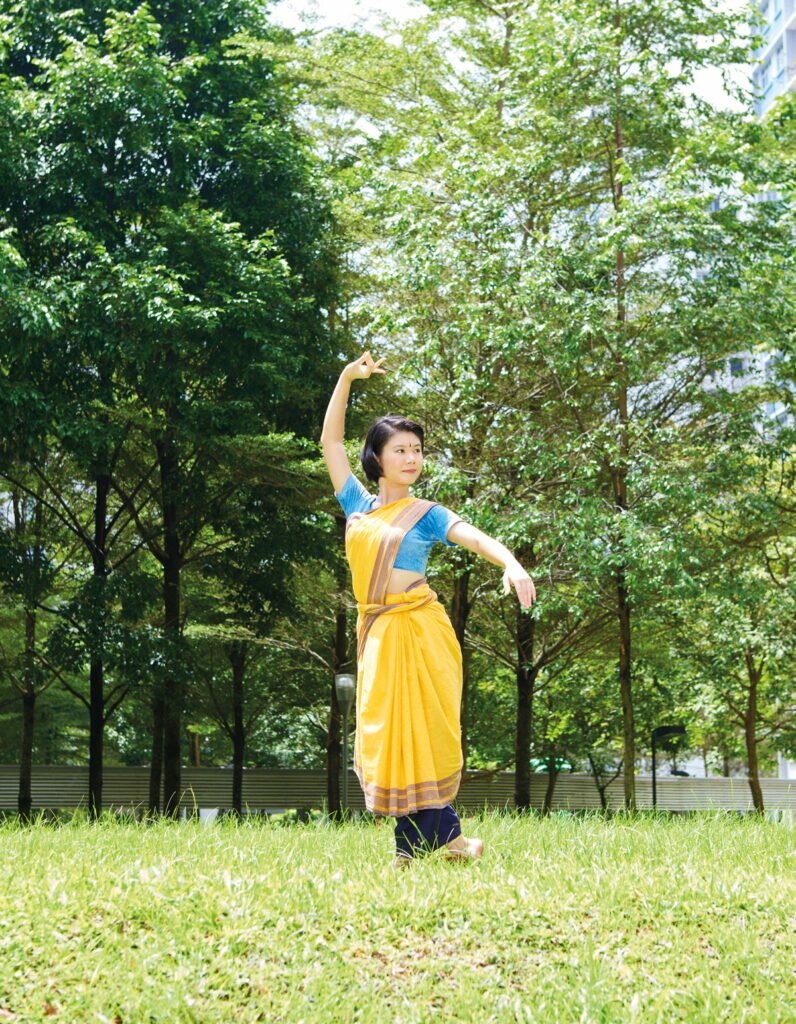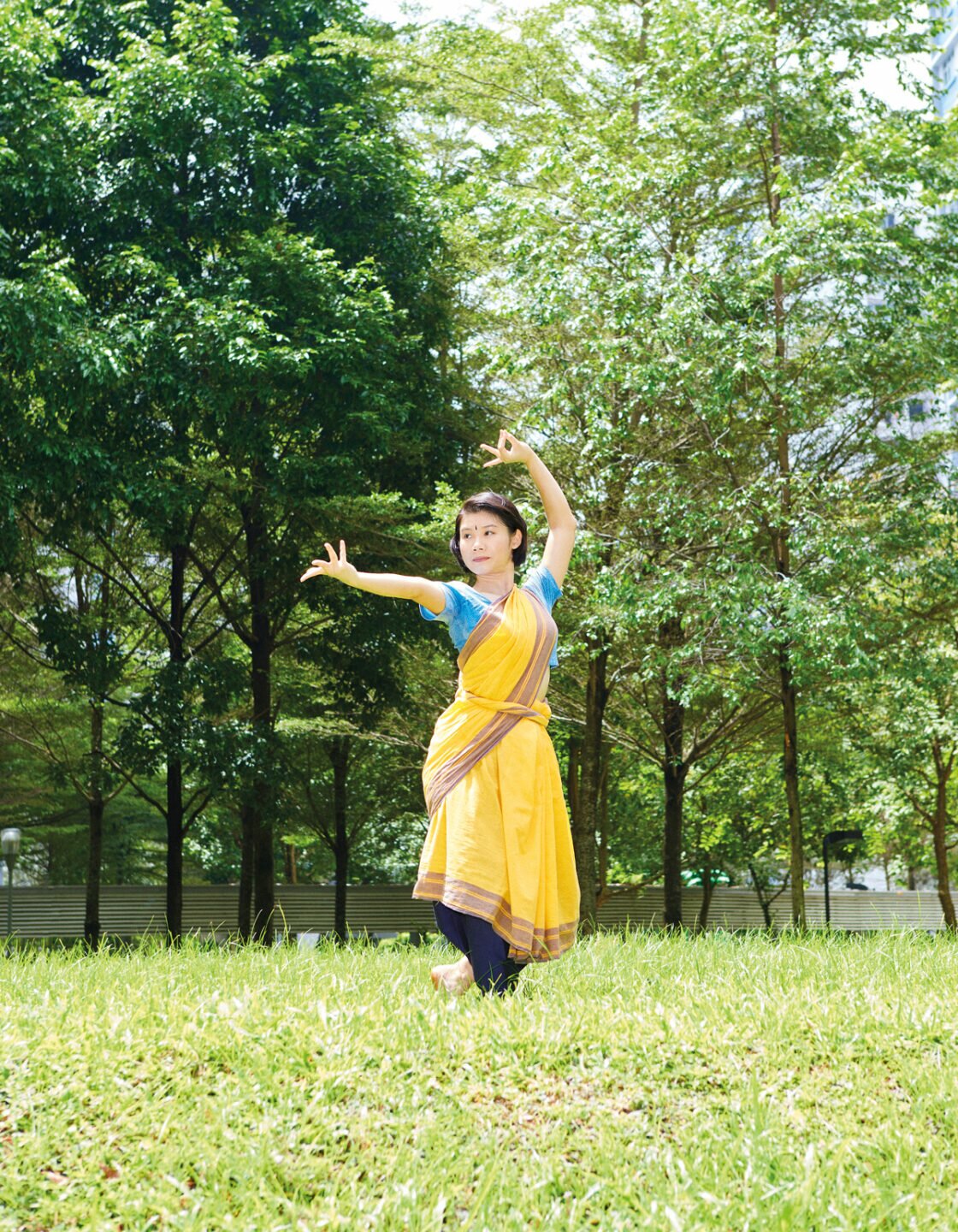You’ll see it splashed across peppy tourism brochures and proclaimed with verve during National Day campaign segments: Singapore’s multiculturalism is bristling with vitality!
Yet, for all that can be said of our undeniable culinary diversity, multiculturalism is often reduced to a tired refrain touting racial harmony. There is little room for deeper discourse about shared identity.
According to a 2017 survey by think-tank The Institute of Policy Studies, there was a lower level of inter-cultural exchange in Singapore, despite respondents reporting an interest in experiencing other ethnic cultures.
How far do our parameters run in crossing over to the “other side”? Is the weave and weft of our cultural fabric bound by something approaching a shared patrimony? We meet two millennials who embody pluralism through the traditional arts, allowing them to leap the bounds of convention and assert their identities.
Malik Mazlan, in bold
In the warm fug of his cluttered studio tucked above his mother’s Muslimah hair salon – a charmingly fusty time capsule whose darkened windows peer over Northbridge Road – Malik Mazlan paints the Chinese character denoting prosperity with practised ease. Observing his deft, unfaltering strokes, you’d never guess that he blundered through art class.
“Art was my worst subject in school. I hated it because I don’t work well with the structures associated with conventional lessons,” recalls the 34-year-old.
Neither were his creative persuasions moulded behind the potter’s wheel. Malik trained under ceramist Dr Iskandar Jalil after completing his O Levels. “He told me I was not good enough to be in the arts,” he says, unleashing a torrent of guffaws. In fact, the Cultural Medallion laureate suggested that a commercially driven career might better suit Malik.
Still, the months-long tutelage at the Malay Heritage Centre served as Malik’s indoctrination into art philosophy. Dr Iskandar introduced him to vernacular concepts such as tabula rasa – “just free your mind and go with the flow” – and subjectivity. His company, aptly named Zen Emptiness, reflects the former.
Once, Dr Iskandar interrogated the young protégé for producing a piece the former suspected to be derivative of another artist’s work. Malik denied the accusation. “He told me that if I were telling the truth, I must have gone through something in my life. It’s interesting because it shows how experiences shape an artist’s understanding of the arts,” he muses.
Japanese culture famously influenced Dr Iskandar’s pottery work, so it wasn’t atypical for Malik to enrol in Japanese language classes. Before returning to Japan, his teacher – who had introduced him to rudimentary Kanji – gifted him with an inkstone and brush. Those tools allowed him to spool away into a career in Chinese calligraphy, where he trained under Yong Cheong Thye for more than a decade.
The acclaimed calligrapher took a shine to his eager acolyte and introduced him to the ancient seal script. “It was quite a wise decision for my mentor to choose this style of calligraphy for me, because of its pictorial qualities,” shares Malik, then a Chinese language illiterate.
Today, he’s graduated to the successive clerical script synonymous with government clerks of ancient China, while being able to reel off calligraphy styles at length. Not that the millennial – who’s given to streams of consciousness punctuated by spontaneous laughter – conforms to the stereotype of a somnolent calligrapher with beetling brows.
He prefers being called an artist and collaborates with other people in his work. For instance, Malik teamed up with a media tech company to retrace calligraphic script using VR goggles for a public performance. In another presentation, he explored an audio interpretation of Chinese calligraphy together with musician and sound artist Vick Low, with the help of a surface detector.
Though cultural intersections sit comfortably in Malik’s wheelhouse, he avers it doesn’t give him carte blanche to take creative liberties. He has no intention of becoming a provocateur, and visibly balks at the prospect of violating cultural sensibilities. Malik dithered for two years before he was confident enough to unveil his works that merged calligraphy with batik. “Some days I can’t sleep worrying about whether I’ll hurt someone’s feelings,” he admits.
To prevent committing cultural misappropriation, the young artist says he defers to the cultural cognoscenti. “I understand the potential pitfalls of just plonking Chinese calligraphy onto batik art. I’m trying to avoid that by having conversations with people,” he explains, lending that he views purists as moral compasses.
Such restraint may be almost paradoxical to his futuristic work, but Malik insists he cleaves to tradition. He pays no attention to detractors. One prominent gallerist told him he was better off as a Grab driver. “I shrugged it off, but later wondered, ‘How can you say that?’ Don’t be rude to Grab drivers who are earning an honest living,” he intones.
As a Malay practising a predominantly Chinese art form, he is less encumbered by cultural baggage. Being perceived as an “outsider” doesn’t excuse transgressions, though.
“I wouldn’t say I can get away with pushing boundaries, but I’m more forgiven for it. It doesn’t mean I can abuse it,” he asserts.
Movement and metaphor with Soo Mei Fei
Indian classical dance gyrates, gesticulates, and lunges in the realm of the divine. Bharatanatyam – whose provenance can be traced to Tamil Nadu’s ancient Hindu temples – for instance, is inextricably linked to Lord Shiva, purveyor of destruction. Here, sequences unfold as cosmic expressions of veneration. It thus stands to reason that practitioners would decipher their complex poses using religion as a north star.
Soo Mei Fei, the first Singaporean Chinese woman to publicly perform a full-fledged arrangetram – a debut recital of bharatanatyam – wends her way through unfamiliar territory in a manner both limber and introspective. Not being a practising Hindu has apparently not hindered her artistic development.
“I see religion as quite separate from the art form, in the sense that many of these gods and goddesses come with stories that people read to understand abstract concepts,” she opines. Through dance, the 23-year-old has distilled the universality of religion, which she describes as “ideas on how to lead our lives.”
Soo bears an inscrutable stillness preternatural for someone surrounded by digital clamour. The makeup artist preening her for the photoshoot has ceased to exist as Soo tilts her head and taps her fingers to the hypnotic Carnatic music playing through her phone. When she performs her routine, though, the petite dancer jounces to life. Her animated facial expressions flick in breathless synchronisation with mind-bogglingly elaborate hand gestures and rhythmic stamping.
-

Soo Mei Fei is the first Singaporean Chinese woman to perform a full-fledged arrangetram – a debut recital of bharatanatyam – publicly. -

Soo typically performs to Carnatic music.
If her movements seem effortless, it is likely because she’s honed her craft since she was in secondary school, where she learned the dance form as a CCA. Practising with a group from diverse cultural backgrounds meant she never had to confront a sense of otherness. Not till she began her formal training shortly after Junior College, at least.
“As the only non-Indian in class, there wasn’t anyone I could model myself after. I didn’t see too many people who looked like me and had the same encounters with dance, which was tough,” she admits. Soo credits her encouraging mentors, including her teacher from Apsaras Arts, for going the extra mile in translating Sanskrit and Tamil lyrics for her.
“Every society has a majority culture, and it only becomes a bad thing when we don’t treat minorities equally.
Soo Mei Fei
Language barriers aside, Soo is drawn to the intricacies of bharatanatyam and odissi, the two dance forms she majors in. “Carnatic music, a genre from South India that I really enjoy for its complex rhythmic mathematics and patterns visualised through dance, often complements bharatanatyam,” she explains. “There are many ways of gesturing in Indian classical dance – you could point with your eyes or tilt your chin forward slightly to do that.”
Being a Chinese practising an Indian art form has its advantages when parsing a new lexicon. “I have been in a place where I was so lost while watching performances because I didn’t sufficiently know the language of dance,” the lithe dancer recounts. “So, whenever I perform, I need to think of how to present it to people who may not understand bharatanatyam. For items that are fully lyrical, I put in a lot more effort to understand every single word, simply because I don’t know the language,” she shares.
This studied approach may explain why veteran local dancer and choreographer V. Balakrishnan lauded her debut performance.
Beyond the glare of the stage lights, dance has also served as her primer to the daily routines of the Indian ethnic group – from eating with their hands, to making offerings to deities. But perhaps more illuminating are the lived experiences of her counterparts that have jiggered her world views.
“Every society has a majority culture, and it only becomes a bad thing when we don’t treat minorities equally. The Indian dance community has not made me feel less valued, even though I’m a minority,” she states emphatically. She adds that learning of her Indian friends’ struggles with discrimination has heightened her awareness of majority privilege.
Even within the Indian dance community, contentious issues prevail. For instance, she points to a preference for fairer-skinned dancers, with those having darker complexions being made to wear makeup to lighten their skin tone. “The intent is not malicious, as they want everyone to look similar as a group. But I question the rationale. People watching a performance shouldn’t expect individual dancers to be the same; why don’t we celebrate diversity?”
It’s the rough-edged candour of someone who was only recently thrust into the spotlight. Soo has read the sniping online comments, mentioning her and cultural appropriation in the same breath, but dismisses trolls as individuals who “aren’t invested in their fleeting opinions”.
“It’s good for me to see these (remarks) so I have to question myself: am I only doing this to appear a certain way, or because I really want to?” For now, the freelance instructor has turned her attention to teaching Indian classical dance to primary and secondary school students.
“I’ve sought some sort of clarity within my practice. When you spend more time teaching, you realise how much you don’t actually know,” she concludes.
Photography: Mun Kong
Make up: Shah Shamsi using Dior Beauty & Keune
